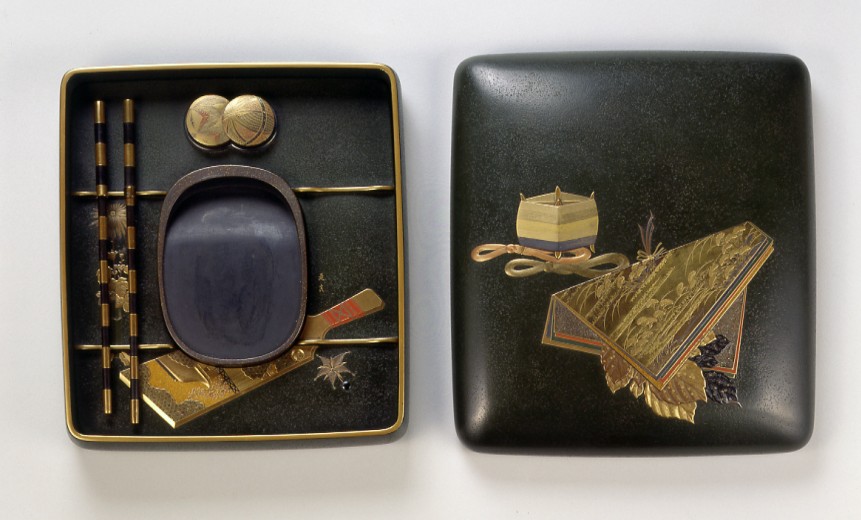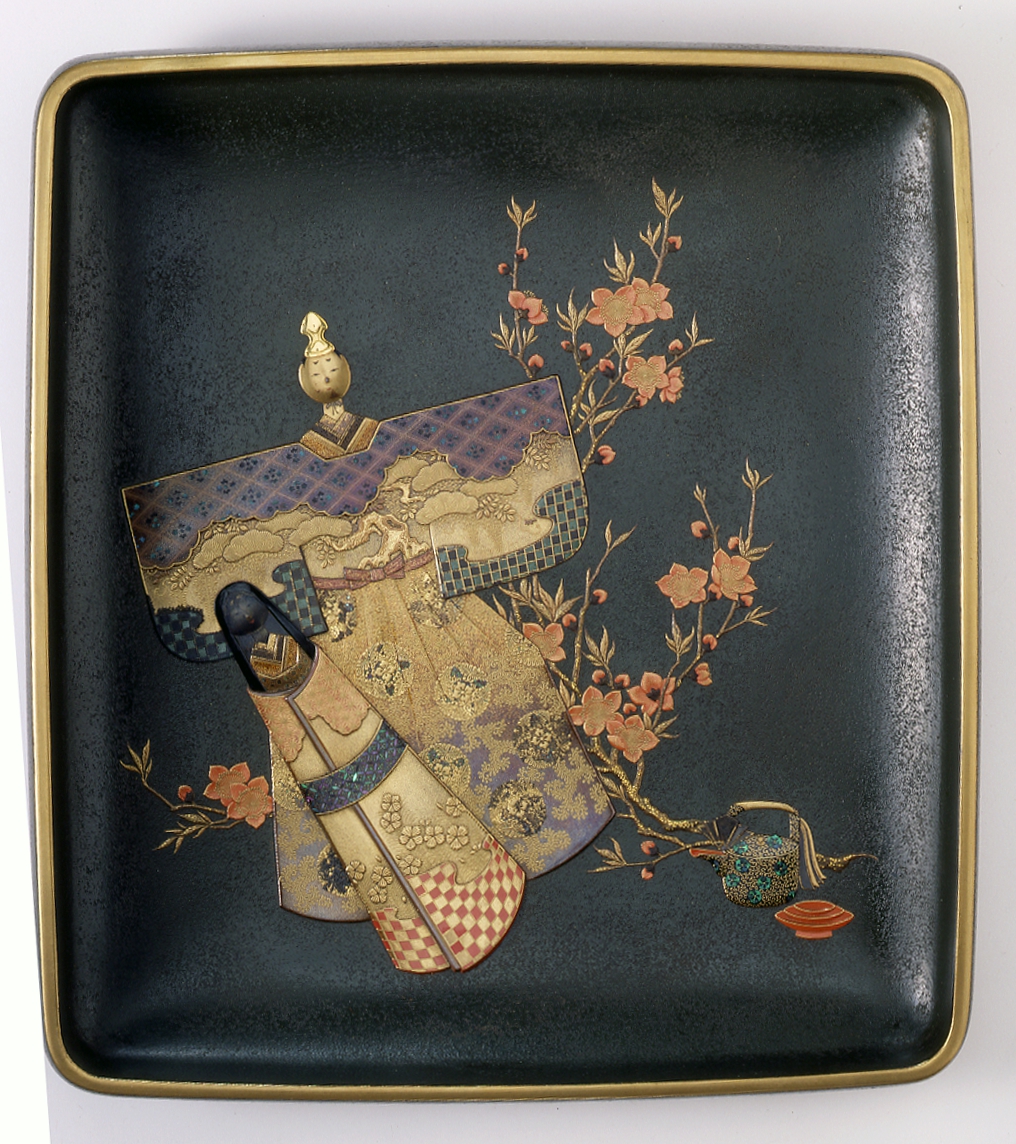 Print Page
Print Page
 Print Page
Print Page
Location: Japan
Materials: wood, bronze, takamaki-e, hiramaki-e, kirikane, keuchi, seidonuri, fundame, shell
Dimensions: 4.8 x 20.5 x 22 cm
Accession Number: BL 39
Other Notes:
A suzuribako with an overhanging lid, decorated with motifs associated with festivals and other seasonal events. The outside of the lid depicts an itomaki [silk-winder] and set of tato or shikishi [folded decorative papers]. These are emblems of the Tanabata festival in the seventh month, celebrating the one day of the year when, according to an early Chinese legend, the Kengyu [Herd Boy] and Tanabata or Shokujo [Weaving Girl] are allowed to meet. The inside of the lid decorated with kamibina [paper dolls], alluding to the Girls’ Festival on the third day of the month, and a branch of shakuyaku [herbaceous peony]; in the corner a choshi [sake-pourer] and a nest of sakazuki.
The base of the box portrays a hagoita [battledore] and a single chrysanthemum-blossom. The decoration carried out on a seidonuri ground in gold, silver, and coloured takamakie and hiramakie, with details in kirikane, keuchi, and aogai; the writing implements embellished with plain bands of black and gold lacquer. The ink-stone of wood, its base decorated in rough seidonuri and its sides with kimpun; the rim covered in gold fundame lacquer.
The hagoita [battledore] and hane [shuttlecock], the lacquered bronze water-dropper in the form of itomari [thread balls], and the single spray of chrysanthemum all appear to allude to the first month, despite the fact that the flower is more usually a symbol of autumn. The New Year theme is also alluded to in the decoration on the hagoita, of flowering red plum by a fence with a palace building in the background.
Bibliography:
J. Earle (ed.), Meiji No Takara: Treasures Of Imperial Japan: Masterpieces by Shibata Zeshin, London 1996, cat. 5.
O. Impey, M. Fairley, J. Earle (eds.), Meiji No Takara: Treasures Of Imperial Japan: Lacquer Vol II, London 1995, cat. 204.

